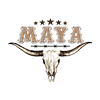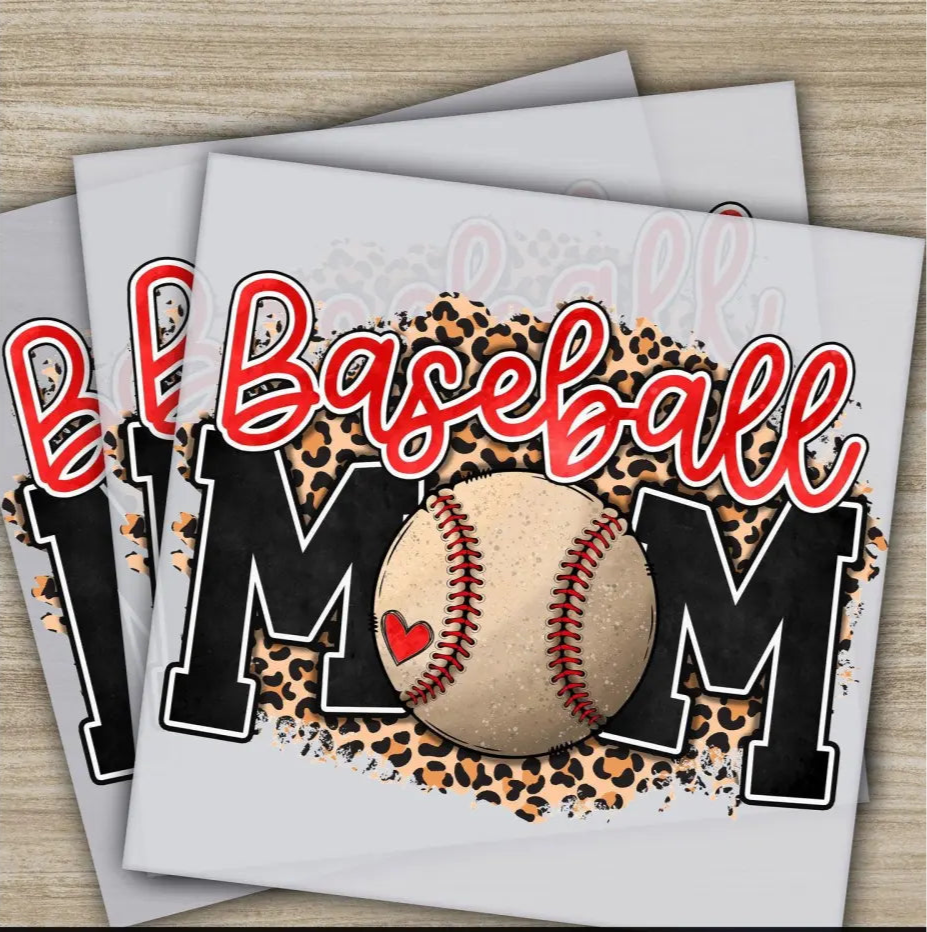Hybrid Printing for Small Brands: Scale Print‑On‑Demand with DTF Transfers, UV DTF, Embroidery, Blank T‑Shirts, Hoodies & Dropshipping
If you're an entrepreneur, Etsy/Shopify seller, or small apparel brand owner, hybrid printing is one of the fastest, most flexible ways to scale custom apparel without heavy investment. By combining DTF transfers, UV DTF, embroidery, high-quality blank t‑shirts and hoodies, and dropshipping fulfillment, you can launch products quickly, test designs profitably, and scale when demand grows. This long-form guide walks you through the technology, cost models, production workflows, quality control, marketing tactics, and how MAYA TX supports your growth with same-day pickup in Austin and nationwide shipping.
Quick overview: What is hybrid printing and who benefits?
Hybrid printing blends multiple decoration methods on a single product line so you can choose the best tool for each job. Typical components include:
- DTF transfers (Direct-to-Film) for vibrant, full‑color graphics that adhere to many fabric types.
- UV DTF for specialty finishes and improved durability through UV curing.
- Embroidery for premium logos, caps, and textured branding details.
- Blank apparel (t‑shirts, hoodies, hats) selected for fit, fiber content, and tag options.
- Dropshipping and print-on-demand fulfillment so products are printed and shipped as orders arrive.
Small brands, side-hustle creators, and regional shops all benefit because hybrid printing reduces upfront inventory, enables faster product testing, and lets you mix premium and budget options in the same catalog.
Why DTF transfers are a game-changer for small brands
DTF transfers have rapidly grown in popularity for print-on-demand because they combine color vibrancy and substrate flexibility with low order minimums. Key advantages:
- Works on cotton, polyester, blends, and many non-traditional fabrics — ideal when you want consistent color across different blanks.
- Excellent color saturation and detail, even on dark garments with a white underbase.
- Lower setup complexity and cost than screen printing for small runs.
- Good wash durability when applied correctly, especially with modern adhesives and pressing workflows.
Limitations include a small hand feel (which you can reduce with thin adhesives and optimized presses) and the need for careful press settings and testing per fabric. But for most small brands and POD sellers, DTF offers the best balance of quality, cost, and flexibility.
Understanding UV DTF: specialty finish and durability
UV DTF integrates UV-curable inks or UV finishing steps into the DTF process. This can lead to:
- Faster curing in production environments with UV units.
- Enhanced scratch and abrasion resistance for high-wear items like hats and hoodies.
- Specialty effects and finishes that stand out on premium SKUs.
Use UV DTF when you need higher durability or want a premium appearance for limited-edition drops.
DTF vs DTG vs Screen Printing vs Heat Transfer: Which to pick?
Make decisions based on volume, fabric, and desired finish. Here’s a concise comparison:
DTF (Direct-to-Film)
- Best for low-to-medium runs, multi-fabric compatibility, and vibrant colors on dark garments.
- Production: Print to film, powder adhesive, cure, transfer with heat press.
DTG (Direct-to-Garment)
- Best for highly detailed photographic prints on cotton-heavy garments; soft hand feel.
- Less flexible on poly blends, higher cost per print for single items.
Screen Printing
- Best for large runs where per-unit cost drops significantly; excellent durability and specialty inks.
- High setup cost and long preparation times for multi-color art.
Heat Transfer Vinyl (HTV) & Other Transfers
- Good for small customizations and simple designs; limited shading/gradients; hand-feel depends on material.
For a lot of small brands selling via Etsy or Shopify, a hybrid approach works best: DTF/UV DTF for colorful artwork and DTG or screen for high-volume staples; embroidery for logo-based premium SKUs.
Workflow: From design to customer
A reliable workflow keeps returns and misprints low and customer experience high. Sample end-to-end workflow:
- Design & proofing: Create print-ready files (300 DPI, PNG for raster, vector for scaling). Include white underbase for dark garments.
- Test print: Produce small test runs on your chosen blank t‑shirts and hoodies to verify color, placement, and hand-feel.
- Production: For DTF, print on film, apply powder adhesive, cure, and heat-press. For UV DTF, ensure UV curing steps are done. For embroidery, digitize and stitch test samples.
- Quality control: Check registration, wash tests, color accuracy, and adhesion. Keep a checklist for every SKU.
- Fulfillment: Print-on-demand/dropshipping provider ships to the customer and handles tracking/returns as arranged.
File preparation & practical tips (beginners + advanced)
- Resolution: 300 DPI at final print size. Vector files are preferred for logos and scaling.
- Color management: Use sRGB for web; ask your printer about color profiles for the closest match. Expect slight variances between screen and print.
- White underbase: Provide or communicate layers so the printer knows where to put the white for dark garments.
- Embroidery digitization: Keep stitch counts reasonable — heavy fill designs increase cost and turnaround.
- File formats: PNG (transparent) for DTF/DTG, AI/EPS/PDF for vector, DST/EXP/PEC for embroidery files when possible.
Quality control checklist
- Proper adhesion after pressing (no lifting edges).
- Color fidelity and consistent density across runs.
- No visible banding or streaks on printed film.
- Embroidery alignment and secure backing/stabilizer use.
- Wash test: at least 10-20 home wash cycles for new inks/adhesives to validate longevity.
Packing, branding, and unboxing experience
Small brands that think beyond the product win repeat customers. Consider:
- Custom printed tissue, thank-you notes, or care cards with washing instructions specific to DTF/DTG/embroidery.
- Low-cost branded stickers or promo codes for repeat purchases.
- Eco packaging options to match sustainable brand messaging.
Pricing examples — how to set profitable prices
Example for a single hoodie SKU using DTF and embroidery accents (hypothetical numbers):
- Blank hoodie: $12.00
- DTF print: $6.00
- Embroidery (small chest logo): $4.00
- Packing & shipping overhead: $3.00
- Total cost: $25.00 — set retail at $45–$60 depending on brand positioning and margin goals.
Always include returns, packaging, and customer service time in your margin calculations. For dropshipping, factor in the service fee or per-order fulfillment cost your provider charges.
Marketing & product launch tactics for POD apparel
Effective launch and growth strategies include:
- Micro-launches: Release a small batch or limited edition with UV DTF specialty finishing to create urgency.
- A/B testing: Test two colorways or two price points using targeted ads to find the best-performing product before scaling to inventory or screen printing.
- Bundling: Offer matching blanks and accessories (hat + tee) to increase average order value.
- Local-first promotions: If you offer same-day pickup in Austin, advertise local pickup discounts to reduce shipping times and costs.
- SEO & product descriptions: Use keywords like DTF transfers, UV DTF, custom apparel, blank t‑shirts, hoodies, hats, embroidery, print-on-demand, and dropshipping strategically in product titles and descriptions.
Integrations & automation for scaling
Automate order flow between your store (Shopify/Etsy) and your fulfillment partner to reduce manual work:
- Use Shopify apps or API integrations to send orders to your print-on-demand provider automatically.
- Set up templates for SKUs and printing instructions to avoid errors in fulfillment.
- Use inventory & shipping rules to manage blackouts, rush orders, and same-day pickup options.
Returns, customer service & handling defects
- Clearly state processing and shipping times on product pages to reduce disputes.
- Have a documented returns policy specific to custom items — many POD businesses offer exchanges or store credit rather than refunds.
- Inspect samples before approving production runs and keep records of print settings to trace issues.
Sustainability and fabric choices
Consumers increasingly care about sustainability. Consider these options:
- Organic cotton or recycled polyester blank t‑shirts and hoodies for premium pricing and eco-friendly positioning.
- Low-impact dyes and water-efficient suppliers.
- Transparency in production and material sourcing in product descriptions.
Industry facts & trends (what the data says)
- The global custom t‑shirt printing market continues to grow as e-commerce and on-demand manufacturing expand (industry reports show steady CAGR in recent years).
- Print-on-demand platforms and dropshipping are lowering the barrier to entry — enabling more independent creators to test niches without large inventory risk.
- Hybrid printing approaches (mixing DTF, DTG, and embroidery) are becoming standard for brands that want both flexibility and premium SKUs.
Side-hustle blueprint: Start selling in 30 days
- Week 1: Validate niche & create 5-10 designs. Research keywords and competitors on Shopify/ Etsy.
- Week 2: Order blank samples and produce test prints (DTF/UV DTF/embroidery combos). Finalize pricing.
- Week 3: Set up your Shopify store, product pages, and shipping rules. Prepare listings with SEO keywords like blank t‑shirts, hoodies, DTF transfers, embroidery, and dropshipping.
- Week 4: Launch with paid ads or organic social, offer limited-time local pickup if you’re in Austin, and collect first customer feedback to iterate.
Useful resources and recommended partners
- MAYA TX — DTF Transfers (internal)
- MAYA TX — UV DTF (internal)
- MAYA TX — Blank Apparel (internal)
- Printful — Industry POD & fulfillment
- Shopify Blog — e-commerce growth guides
- Oberlo — dropshipping strategies
Frequently asked questions
How durable are DTF prints after washing?
Well-applied DTF prints can withstand many washes (20+ cycles) without major degradation when pressed correctly and washed inside out in cool water. UV DTF often improves abrasion resistance.
Can you mix embroidery and DTF on the same garment?
Yes — embroidery for logos and DTF for colorful artwork is a common hybrid approach. Just coordinate placement to avoid stitching over printed areas that could affect adhesion.
Do I need to keep inventory if I use dropshipping?
No. Dropshipping and POD mean the supplier prints and ships per order. MAYA TX also offers same-day pickup if you prefer to stock local inventory for faster fulfillment.
Final thoughts & next steps
Hybrid printing gives small brands the power to offer a wide product mix — from budget-friendly DTF tees to premium UV DTF hoodies and embroidered caps — without the typical inventory risk. For entrepreneurs and Etsy/Shopify sellers, it's the sweet spot: flexibility, quality, and scaling potential.
Ready to start or scale your apparel brand? MAYA TX supports same-day pickup in Austin, nationwide shipping, and full dropshipping fulfillment — we print and ship for your customers so you can focus on designs, marketing, and growth.
Call to action: Order DTF transfers, explore UV DTF finishes, or shop our selection of blank t‑shirts and hoodies today. Visit MAYA TX: DTF Transfers • UV DTF • Blank Apparel. Contact us to set up dropshipping and fulfillment for your store.


















